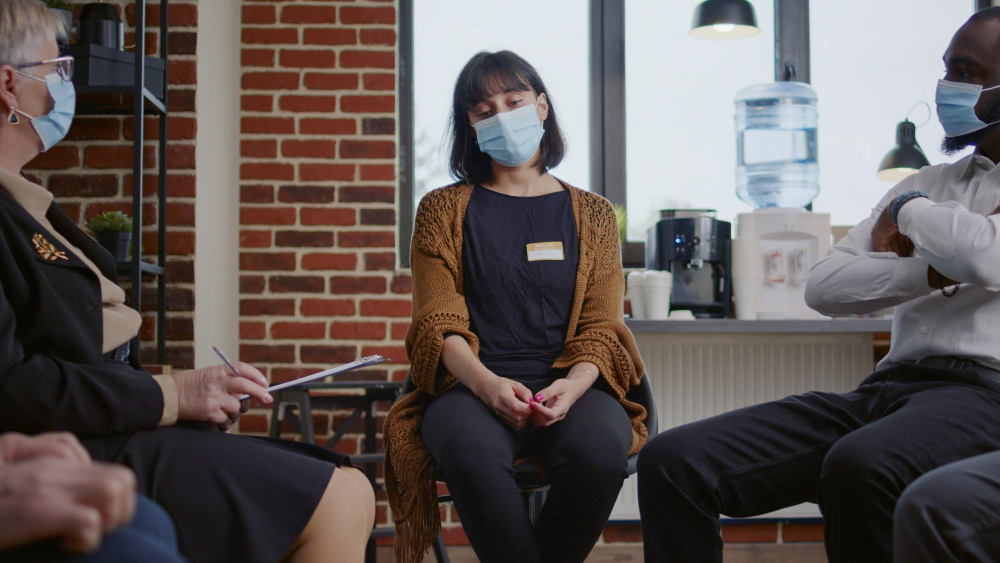Substance Abuse Prevention
July 2, 2024
Discover effective substance abuse prevention strategies and interventions. Safeguarding communities and promoting well-being.
Understanding Substance Abuse Prevention
Substance abuse prevention plays a crucial role in promoting the well-being and health of individuals, families, and communities. By addressing the root causes and risk factors associated with substance use, prevention efforts aim to reduce the prevalence of substance use disorders and their detrimental effects. This section will explore the importance of prevention efforts and the impact of substance use disorders.

Importance of Prevention Efforts
Prevention efforts are essential in tackling substance abuse and its associated consequences. The majority of adults who meet the criteria for having a substance use disorder started using substances during their teen and young adult years, emphasizing the critical role of prevention during these formative years. By focusing on prevention, we can intervene early and provide individuals with the knowledge, skills, and support necessary to make informed decisions and avoid the initiation or progression of substance use.
Effective prevention programs not only reduce the likelihood of substance abuse but also address a wide range of risk factors associated with substance use disorders. These risk factors can include individual factors such as genetic predisposition, early onset of substance use, and physical and mental health consequences. By targeting these risk factors, prevention efforts aim to create a protective environment that fosters healthy behaviors and reduces the likelihood of substance abuse.
Impact of Substance Use Disorders
Substance use disorders have a profound impact on individuals and society as a whole. Youth with substance use disorders experience higher rates of physical and mental illnesses, diminished overall health and well-being, and potential progression to addiction. High-risk substance use among youth can lead to adverse outcomes such as injury, criminal justice involvement, school dropout, and loss of life [1].
The consequences of substance abuse extend beyond the individual, affecting families, communities, and society at large. Substance abuse places a significant burden on healthcare systems, law enforcement agencies, and social services. By investing in prevention efforts, we can mitigate these negative consequences and create a healthier and safer environment for everyone.
In recognition of the importance of substance abuse prevention, organizations like the Centers for Disease Control and Prevention (CDC) actively work to address youth high-risk substance use through resources and prevention initiatives. By raising awareness, promoting evidence-based prevention strategies, and supporting communities, these efforts contribute to a comprehensive approach to substance abuse prevention.
Understanding the significance of prevention efforts and the impact of substance use disorders allows us to prioritize prevention strategies and allocate resources effectively. By working together, we can create a society that supports healthy choices and empowers individuals to lead substance-free lives.
Risk Factors for Substance Abuse
Identifying the risk factors associated with substance abuse is crucial in developing effective prevention strategies. By understanding these risk factors, we can better address the underlying causes and work towards reducing the prevalence of substance abuse. Two significant risk factors worth exploring are the early onset of substance use and the physical and mental health consequences associated with substance abuse.
Early Onset of Substance Use
Research from the CDC indicates that the majority of adults who meet the criteria for having a substance use disorder started using substances during their teenage and young adult years. Early initiation of substance use puts individuals at a greater risk of developing a substance use disorder later in life. This highlights the importance of prevention efforts targeting young individuals to delay or deter their initial exposure to substances. Early intervention and education programs can play a vital role in preventing substance abuse among adolescents and young adults.
Physical and Mental Health Consequences
Substance abuse can have significant physical and mental health consequences, particularly among youth. According to the CDC, youth with substance use disorders are more likely to experience higher rates of physical and mental illnesses, diminished overall health and well-being, and potential progression to addiction. Substance abuse can negatively impact various aspects of an individual's life, including their academic performance, relationships, and overall quality of life.
Furthermore, high-risk substance use among youth can lead to adverse outcomes such as injury, criminal justice involvement, school dropout, and even loss of life. It is crucial to address the physical and mental health consequences associated with substance abuse through prevention programs that promote healthy coping mechanisms, emotional well-being, and access to mental health resources.
Understanding the risk factors associated with substance abuse, such as early onset of substance use and the physical and mental health consequences, can guide the development of effective prevention strategies. By targeting these risk factors through education, early intervention, and support services, we can work towards reducing the prevalence of substance abuse and its associated negative outcomes.
Trends in Adolescent Substance Use
Understanding the current trends in adolescent substance use is crucial for effective substance abuse prevention efforts. By examining reported illicit drug use and commonly used substances among adolescents, we can gain insight into the landscape and make informed decisions regarding prevention strategies.
Reported Illicit Drug Use
According to the National Institute on Drug Abuse (NIDA), the percentage of adolescents reporting substance use in 2022 largely held steady after significantly declining in 2021. The survey revealed that 11% of eighth graders, 21.5% of 10th graders, and 32.6% of 12th graders reported any illicit drug use in the past year.
It is important to note that reported use of any illicit drug within the past year remained at or significantly below pre-pandemic levels for all grades in 2022. This indicates a positive trend in terms of reducing substance use among adolescents.
Commonly Used Substances
The survey conducted by NIDA found that adolescents most commonly reported the use of alcohol, nicotine vaping, and cannabis in the past year. These levels generally held steady with those reported in 2021.
To gain a deeper understanding of the substances commonly used by adolescents, let's take a closer look at each of them:
Alcohol
Alcohol remains a commonly used substance among adolescents. It is important to note that underage drinking can have serious consequences on physical and mental health, as well as academic and social functioning. Prevention efforts should focus on educating adolescents about the risks associated with alcohol use and promoting responsible decision-making.
Nicotine Vaping
Nicotine vaping, often through e-cigarettes or vape pens, has gained popularity among adolescents in recent years. The use of nicotine can have detrimental effects on adolescent brain development and overall health. Prevention strategies should address the dangers of nicotine addiction and emphasize the importance of avoiding vaping products.
Cannabis
Cannabis use among adolescents continues to be a concern. Regular cannabis use during adolescence can negatively impact brain development and cognitive function. It is essential to educate adolescents about the potential risks associated with cannabis use and promote healthy alternatives.
While the data indicates stable or declining use of illicit drugs among young people over many years, it is important to remain vigilant. Recent rises in overdose deaths among young people, largely attributed to illicit fentanyl contaminating the drug supply, highlight the need for ongoing prevention efforts and education [2].
By staying informed about the trends in adolescent substance use, we can tailor prevention strategies to target the specific substances and address the underlying factors contributing to substance abuse among this vulnerable population.
Strategies for Preventing Substance Abuse
When it comes to preventing substance abuse, various strategies can be implemented to promote healthier behaviors and reduce the risk of substance use disorders. Two key strategies in substance abuse prevention are protective factors and community-based programs.
Protective Factors
Protective factors play a crucial role in buffering youth from risky behaviors, including substance use. These factors are characteristics or conditions that can increase resilience and decrease the likelihood of engaging in substance abuse. Some common protective factors identified by the CDC include:
- Strong family bonds and support
- Positive relationships with peers and role models
- Academic success and school engagement
- Access to healthcare and mental health services
- Opportunities for community involvement and extracurricular activities
- Clear and consistent expectations and consequences
By fostering and reinforcing these protective factors, individuals, families, and communities can create an environment that promotes healthy choices and reduces the risk of substance abuse.
Community-Based Programs
Community-based programs have proven to be effective in preventing substance abuse, particularly when implemented within broader contexts and targeted towards high-risk groups [3]. These programs are designed to address the underlying factors that contribute to substance abuse and provide support systems for individuals and families.
Community-based programs can include various components, such as education and awareness campaigns, mentoring and counseling services, after-school programs, and recreational activities. These programs aim to engage individuals at different stages of life, from children and adolescents to adults, in order to create a comprehensive approach to substance abuse prevention.
By involving the entire community, including schools, parents, healthcare providers, and local organizations, these programs can have a greater impact on reducing substance abuse rates. Collaborative efforts and partnerships between different stakeholders are essential for the success of community-based prevention initiatives.
In summary, protective factors and community-based programs are important strategies in the prevention of substance abuse. By focusing on strengthening protective factors and implementing comprehensive community-based programs, we can create a supportive environment that promotes healthy choices and reduces the risk of substance use disorders.
Effective Prevention Interventions
When it comes to substance abuse prevention, implementing effective interventions is crucial to reduce the risk of substance use and abuse. These interventions are classified into different categories and employ various strategies to address the complex nature of substance abuse.
Categorization of Preventive Strategies
Prevention strategies are traditionally categorized into three types: primary, secondary, and tertiary preventions.
- Primary Prevention: This category focuses on preventing substance use and abuse before it occurs. Primary prevention strategies target the general population and aim to promote healthy behaviors, increase awareness of the risks associated with substance use, and build protective factors that reduce the likelihood of substance abuse.
- Secondary Prevention: Secondary prevention efforts are geared towards early identification and intervention for individuals who are at increased risk of substance abuse. These strategies involve screening and assessment to identify individuals who may be engaging in risky behaviors or showing early signs of substance use, allowing for timely intervention and treatment.
- Tertiary Prevention: Tertiary prevention focuses on treatment and harm reduction for individuals who are already using substances. This category includes interventions aimed at reducing the negative consequences of substance abuse, providing access to treatment services, and supporting individuals in their recovery journey.
Factors Contributing to Success
Several factors contribute to the success of substance abuse prevention interventions. These factors have been associated with positive outcomes in preventing substance use and abuse (Addict Health):
- Self-efficacy: Building individuals' confidence in their ability to resist substance use plays a significant role in prevention efforts.
- Motivational enhancement: Motivational interventions that enhance individuals' motivation to engage in healthy behaviors and avoid substance abuse are effective in prevention.
- Life coping skills: Equipping individuals with skills to cope with various life challenges and stressors is crucial in reducing the risk of substance abuse.
- Decision-making: Enhancing decision-making skills helps individuals make informed choices and resist the temptation of substance use.
- Enhanced drug resistance skills: Providing individuals with skills to resist peer pressure and social influences that promote substance use is vital in prevention efforts.
- Positive youth development: Fostering positive youth development through supportive environments, mentorship, and opportunities for personal growth can contribute to preventing substance abuse.
Additionally, considering cultural characteristics and tailoring prevention programs to specific cultural contexts has been found to be effective. Culturally grounded interventions take into account cultural norms, values, and beliefs, making them more relevant and engaging for the target population.
Implementing evidence-based prevention programs in schools has shown promising results in reducing adolescent drug abuse. These programs focus on social resistance skills training, normative education, and competence enhancement skills training. They aim to increase awareness of social influences supporting substance use, correct misperceptions about substance use prevalence, and enhance personal and social skills to resist substance use. The most effective programs are interactive, skills-focused, and implemented over multiple years.
By utilizing a combination of effective prevention strategies and considering the factors that contribute to success, it is possible to make significant strides in substance abuse prevention and promote healthier communities.
Gender Differences in Substance Abuse
When it comes to substance abuse, there are notable gender differences in various aspects, including admissions to treatment and primary substances of abuse. Understanding these differences can help tailor prevention and intervention efforts to meet the specific needs of different populations.
Admissions to Treatment
In 2011, there were significant differences in the gender distribution of admissions to substance abuse treatment. Approximately 33.1% of the 1.84 million admissions were female, while 66.9% were male.
Primary Substances of Abuse
The primary substances of abuse can also vary between genders and age groups. Among admissions aged 12 to 17, a larger proportion of females reported alcohol as their primary substance of abuse compared to males (21.7% vs. 10.5%) [5]. On the other hand, marijuana was more commonly reported as the primary substance of abuse among male admissions in this age group (80.7% compared to 60.8% for females).
For the age group of 18 to 24, similar trends were observed. Male admissions had a higher proportion reporting marijuana as their primary substance of abuse (33.4%) compared to females (22.1%).
Additionally, within the age group of 65 or older, there were notable gender differences in the primary substances of abuse. Female admissions in this age group had a significantly higher proportion reporting primary abuse of prescription pain relievers, such as oxycodone, compared to their male counterparts (7.2% vs. 2.8%) [5].
Understanding these gender differences in admissions to treatment and primary substances of abuse can help inform prevention efforts and the development of targeted interventions. It highlights the importance of considering gender-specific risk factors, treatment approaches, and prevention strategies to effectively address substance abuse in different populations.
References
Learn About Clear Steps Recovery and How We Can Help You
Once you reach out to Clear Steps Recovery, your path becomes clear, and you can get the help and support you need to break the cycle of addiction. Our serene woodland environment promotes physical, mental, emotional, and spiritual healing.
Call today or contact us online to get started.
The Path Is Clear – Take Your First Steps Today with Clear Steps Recovery
With our team and your desire to heal, we can improve your quality of life and functional abilities, so you can get back to living your best life.
































.jpg)


















.jpg)
.jpg)















































